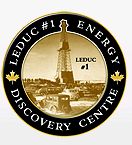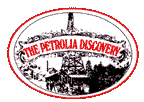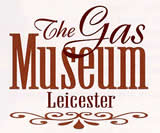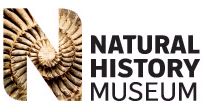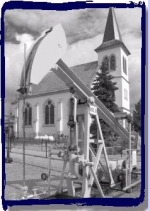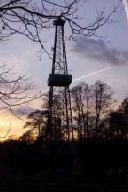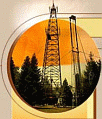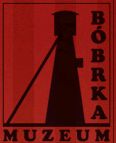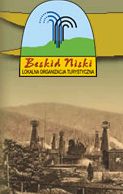Arkansas Oil Museums
|
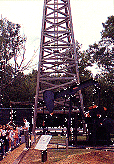
Arkansas Museum
of Natural Resources
3853 Smackover Highway
Smackover, Arkansas 71762
(870) 725-2877
|
|
Arkansas Museum of Natural Resources
Smackover, Arkansas
www.amnr.org
Located on five acres adjacent to the Education Center, the Oilfield Park includes seven operating examples of the oil producing methods used in the south Arkansas Oil Field from the 1920s through today.
- 1920s standard rig with a 112 ft wooden derrick and a battery of wooden storage tanks
- 1920s-1930s 64 ft pipe derrick and gear-driven pumping unit
- 1930s-1940s central power station (jack plant)
- 1930s "gin pole" derrick and Oklahoma pump jack
- 1930s-1940s 87 ft steel derrick with Pennsylvania-type pump jack
- modern production unit
|
California Oil Museums
|
|
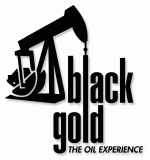

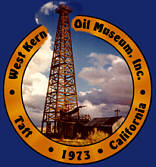
California has some world-class oil museums, along with several museums that have smaller displays on tar pits, famous gushers, or the oil industry in general. Please click the button below to learn more about these museums.
|
Illinois Oil Museums
|
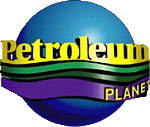
Museum of Science & Industry
57th ST & Lakeshore Dr.
Chicago, Illinois 60637
(773) 684-1414 |
|
Museum of Science and Industry
- Petroleum Planet
Chicago, Illinois
www.msichicago.org/whats-here/exhibits/petroleum-planet/
Greeted by a remote-operated underwater vehicle and multicolored tubes of bubbling crude oil, you’ll step into the exhibit and be transformed into a tiny hydrocarbon molecule in a vast pipeline. From there, you will embark on a journey through distillation and transportation control and the "pig pen," finally arriving at your destination as a finished product. And don’t think this trip will be a stroll through the park: you’ll have the opportunity to engage in hands-on activities with fantastic murals and multimedia presentations to guide you on your way.
|
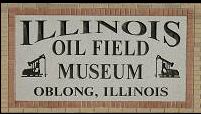
Illinois Oilfield Museum
10570 N. 150th St
Oblong, Illinois 62449
(618) 592-4664 |
|
Illinois Oilfield Museum
Oblong, Illinois
www.theonlyoblong.com/oil_field/
The Shire farm oil gusher near Stoy started the oil "boom" of 1906, oil and gas were known to exist in this territory as early as 1866. A "boom" started near Westfield with a building being erected there and known as "Oil City House", and a large tract of land leased. With a drilling outfit from Pennsylvania, the first well was put down several feet when the tools were lost in the well, which was eventually abandoned.
Other wells were started but hard-luck mishaps closed down drilling. In 1904, a good well was drilled about 100 yards from the firstwell. On February 1, 1906, D.T. Finley of Pittsburg brought in a gas well on the Shire farm that tested a pressure of 300,000 feet daily. Within a week, with deeper drilling, such a gusher was struck that work had to be stopped temporarily. News of the gusher spread fast and oil leasers and operators began flocking in to the area paying fifty cents to a dollar an acre. A week later land was going at $30 per acre with a percentage of the oil rights. The last of February, Mr. Shire refused $10,000 for his forty acres. Miss Metta Mann, who owned a 140 acre tract near the Shire well, received a bonus of $5,000 and a sixth royalty. W.T. Leckey refused $135 an acre for his 240 acre farm a mile from the Shire well. Savilla Shipman, Joseph Crowley, S.T. Lindsay and E.E. Lindsay bought 60 acres near Hardinville in May 1906 for $60 an acre, selling it a month later for $11,200 cash and one-sixth oil rights.
|

Wood River Refinery History Museum
Highway 111 (next to refinery)
Wood River, Illinois
(618) 255-3718 |
|
Wood River Refinery History Museum
Wood River, Illinois
www.wrrhm.org
The Wood River Refinery History Museum is located in front of the Conoco-Phillips Refinery on Highway 111 in Wood River, IL. There are four buildings in our complex, so to see most of our collection, plan on spending some time. Just to see the main Museum contents won't take as long, but you miss the vehicles and other significant items.
|
Kansas Oil Museums
|
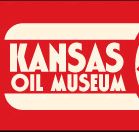
Kansas Oil Museums
383 East Central Ave
El Dorado, Kansas
(316) 321-9333 |
|
The Kansas Oil Museum
El Dorado, Kansas
www.kansasoilmuseum.org
The Kansas Oil Museum is the leading museum dedicated to the discovery and development of the oil industry in Kansas. Enjoy indoor exhibits on farming, ranching and oil; a hand-on children's area, Texaco Theater and Kansas Oil and Gas Legacy Gallery.
|
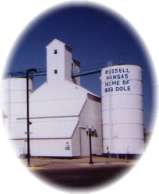
Oil Patch Museum
I-70 & U.S. 281
Russell, Kansas
(785) 483-3637 |
|
Oil Patch Museum - Kansas
Russell, Kansas
www.rwisp.com/rchs/Oil_Patch_Museum/oil_patch_museum.html
Oil Patch Russell is a place to see, feel and learn about oil, the "Black Gold" that fuels man's imagination, as well as his machines. The story of the people and events that make up the history of oil in this area will come alive at Oil Patch Russell.
Whether you are a youngster eager to explore a new subject or an experienced oil person looking to relive old memories, you will catch the spirit of oil at Oil Patch Russell.
Tour the museum building and learn the story of the Lucky Seven and the drilling of the Carrie Oswald #1, the first discovery well drilled in Russell County in 1923.
Walk through an actual oil storage tank and study the geology, drilling and production and transportation exhibits. Take the outdoor walking tour and view cable tool drilling rigs, rotary drilling rigs, pulling units, steam engines and pump jacks.
The spirit of Oil is alive at Oil Patch Russell.
|
Louisiana Oil Museums
|

International Petroleum Museum
111 First Street
Morgan City, Louisiana 70381
(985) 384-3744 |
|
International Petroleum Museum
Morgan City, Louisiana
www.rigmuseum.com
A tribute to the pioneering men and women of an industry that developed a culture based on initiative, perseverance, creativity, and hard work. It is a living reminder of the positive contributions, the technological advancements and the world-wide influence of an industry that began in this sleepy, fishing village community.
Through the efforts of the rig museum, everyone will have the opportunity to experience the real oilfield. It will tell the story from the view point of the participants. The hardships and the heroism, the challenges and the conquests, the problems and the solutions will be told here. The International Petroleum Museum and Exposition will be an accurate depiction of the way it was in the offshore oil business.
|

Caddo-Pine Island
Oil and Historical Museum
200 S Land Ave
Oil City, Lousiana 71061
(318) 995-6845 |
|
Caddo-Pine Island
Oil and Historical Museum
Oil City, Lousiana
www.ohwy.com/la/c/coeaiirl.htm
The Museum is dedicated to the history and preservation of northwest Louisiana's natural resources and rich oil history, mystical Caddo Lake of Louisiana and Texas, and the regional people. Preserved antique oil-drilling machinery and a Kansas City Southern caboose reside near the renovated Kansas City Southern Depot building. See one of the few remaining regions with so much oil history undisturbed, where a country drive reveals steel derricks common in the pine forests. In 1911 lake drilling resulted in the first inland and over-water isolated platform drilling in the United States. The preserved original bank building and post office of Trees City, one of the first US oil company towns are preserved on the museum grounds.
|
New York Oil Museums
|

Pioneer Oil Museum of New York
471 Main Street
Bolivar, New York 14715
(585) 928-1796
(585) 928-2377 |
|
Pioneer Oil Museum of New York
Bolivar, New York
www.pioneeroilmuseum.com/
The Pioneer Oil Museum is located in what used to be the McEwen Brothers Oilfield Supply Store, in the heart of the old "Allegany Oil Field." The oil fields of Cattaraugus and Allegany Counties are the northernmost extensions of the nation's oldest oil-producing region; Northwestern Pennsylvania. For over a century the "Penn Grade" fields of Appalachia have been the source of the world's finest lubricating oils.
|
Oklahoma Oil Museums
|
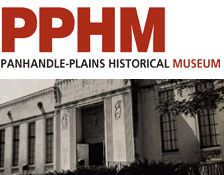
Panhandle Plains Historical Museum
2503 4th Avenue
Canyon, Texas 79015
(806) 651-2244 |
|
Panhandle Plains Historical Museum
Don D. Harrington Petroleum Wing
Canyon, Texas
www.panhandleplains.org/collections/perm-petroleum.html
You will find the heart of Texas art, the free spirit of the Taos and Santa Fe schools, and the unsurpassed Southwest American Indian art. Unlock the hidden world of the ancient past through our paleontology, geology and archeology areas while learning about the rich history of the region and seeing some of the finest examples of American fashion in the Textiles Gallery.
|
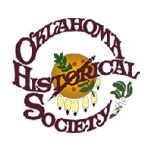
Healdton Oil Museum
315 E. Main Street
Healdton, OK 73438
(580) 229-0900 |
|
Healdton Oil Museum
Healdton, Oklahoma
www.okhistory.org/outreach/affiliates/healdtonoil.html
The opening of the Healdton oil field in 1913 set into motion one of Oklahoma's greatest oil booms. By 1937 this field, the largest of nine such fields located in Carter County, had produced over 2 million barrels of oil, making it one of the most productive pools in the state. The first successful well was completed in August 1913 at the depth of only 920 feet. Oilmen streamed into the area as word of the discovery spread. By June 1914, an estimated 120 oil companies were actively searching for oil around Healdton. The shallow depth of the oil bearing sands attracted smaller operators. The shallow depth reduced the amount of capital necessary to drill a well. This gave the Healdton area a reputation for being a "poor man's" field. The low cost of drilling in the Healdton field attracted a large number of Oklahoma investors. Among those establishing a financial base through Healdton oil were Lloyd Noble, Wirt Franklin, Robert A. Hefner and former Governor Charles N. Haskell. Also in the Healdton field, Erle Halliburton perfected his methods of oil well cementing, establishing his company as a leader in oilfield technology.
|
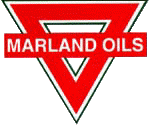
Marland Oil Museum
901 Monument Road
Ponca City, Oklahoma 74604
(800) 422-8340 |
|
Marland Oil Museum
Ponca City, Oklahoma
www.marlandmansion.com/Pages/mmaroil.html
The Marland Oil Museum presents the saga of the amazing success of E. W. Marland's early oil company in Ponca City, Oklahoma, and its ultimate takeover. Many flamboyant personalities created the Oklahoma oil industry in the early 20th century, but none equaled E.W. Marland. Marland's vision and tireless energy formed a progressive company whose ideals and innovations continue to this day.
Murals and artifacts highlight the Marland oil boom and the prosperity that followed.
|
Texas Oil Museums
|
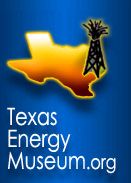
Texas Oil Museums
600 Main Street
Beaumont, Texas 77701
(409) 833-5100 |
|
Texas Energy Museum
Beaumont, Texas
www.texasenergymuseum.org
Explore the fascinating world of petroleum science from the formation of oil to the geology surrounding it. Talking robotic characters relate the story of early oil well drilling.
Discover the beginnings of the Texas oil industry as historical characters share their adventures of the great Spindletop Gusher of 1901. Interactive exhibits depict the unique history oil exploration, production and refining.
|
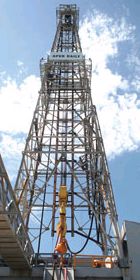
Offshore Drilling Rig and Museum
Pier 19
Galveston, TX 77550
(409) 766-7827 |
|
Offshore Energy Center
Ocean Star Museum
Galveston, Texas
www.oceanstaroec.com
Visitors board the retired jackup drilling rig and view a video about the offshore industry. The museum features three floors of models and interactive displays illustrating the story of offshore oil and gas from seismic technology to exploration and production. Scale models of production platforms, actual drill bits and remotely-operated vehicles (ROVs) as well as videos and exhibits explain drilling, geology, seismic, well servicing and production.
Following a leisurely tour inside the museum, visitors can take the skywalk out onto the drill floor of the rig, or visit the exhibits on the pipe deck from the first floor of the museum.
|

East Texas Oil Museum
Hwy 259 at Ross St
Kilgore, Texas 75662
(903) 983-8295 |
|
East Texas Oil Museum
Kilgore, Texas
www.easttexasoilmuseum.com/Pages/history.html
The easy-going rural life of East Texas changed drastically with the discovery of oil in 1930 and 1931 – years of hardship, scorn, luck and wealth which brought people, ideas, institutions and national attention to East Texas.
In 1929, a 70-year-old wildcatter, Columbus Marion “Dad” Joiner, unsuccessfully drilled two dry holes south of Kilgore. Then in May, Joiner spudded a third hole on the Daisy Bradford farm in Rusk County. It was not until Oct. 3, 1930 that a production test was done, resulting in a gusher – the discovery well, Daisy Bradford No. 3.
Two months later, oil fever had begun to mount with a production test by Bateman Oil Company on the Crim family farm, south of Kilgore. On Sunday morning, Dec. 27, while Mrs. Crim was attending church, the Lou Della Crim well blew in, flowing at 22,000 barrels a day.
|
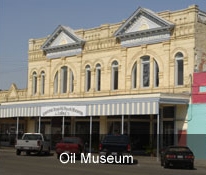
Central Texas Oil Patch Museum
421 East Davis Street
Luling, Texas 78648
(830) 875-1922 |
|
Central Texas Oil Patch Museum
Luling, Texas
www.oilmuseum.org
In 1922, Edgar B. Davis brought in the Rios #1, which proved to be a part of one of the most significant fields ever discovered in the Southwest. Almost overnight, Luling was transformed from a railroad town of 500 - to an oil town of 5,000. The Central Texas Oil Patch Museum was founded in 1990 as a non-profit, educational foundation. It is dedicated to the collection, restoration, and preservation of historic oil producing methods, accessories, and the people of the industry. Established to share the history with the public, the museum illustrates the life and times of the Central Texas "Oil Boom in the Oil Patch".
|
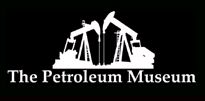
Permian Basin Petroleum Museum
1500 Interstate 20 West
Midland, TX 79701
(432) 683-4403 |
|
Permian Basin Petroleum Museum
Midland, Texas
www.petroleummuseum.org
There was a great variety of equipment in the oil fields (the “oil patch”) in the 1920s and 1930s . Steam, gas, and electric powered drilling rigs, contributed to the excitement of the industry growing to meet mushrooming demand. The Museum’s 40-acre outdoor exhibit area of drilling rigs and related equipment is the largest collection of its type in the world.
Exhibits Include:
- Eight full-size cable-tool rigs
- Santa Rita No.2 - originally a drilling rig but converted for pumping
- 148 ft mast rotary drilling rig
- 119 ft 1930s steel production derrick
- Oil field tools such as drill bits, tools, equipment, hard hats and more
- Modern drilling rig
|
Pennsylvania Oil Museums
|
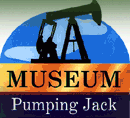
The Pumping Jack Museum
Crawford Center Business Office
603 Hill St.
Emlenton, PA 16373
(724) 867-0030 |
|
Pumping Jack Museum
Emlenton, Pennsylvania
www.hypercision.com/museum/
The Pumping Jack Museum's mission is to collect, protect, and display the unique heritage of the town of Emlenton and the surrounding area. Our rich history is a convergence of early oil history and the heritage of the surrounding area. We want to honor all those who have gone before us that worked in the early western Pennsylvania oil fields, refineries, and on local farms.
|
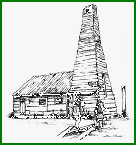
Drake Well Museum
292 Museum Lane
Titusville, Pennsylvania 16354
(814) 827-2797 |
|
Drake Well Museum
Titusville, Pennsylvania
www.drakewell.org
Come see where the industry that puts a drop of oil in your life every day was born.
A steam engine whistle calls you to the replica of Edwin Drake's 1859 engine house, where oil from the famous well flows into a "never filling" barrel. Follow squeaking rod lines to learn how pioneer oil workers used one engine to pump many wells. They invented a whole new industry.
Don't forget your camera.
Feed plastic apples to "Ed and Dan" in the Oil Transportation building as you wait for the Nitro truck to explode. Walk the path along Oil Creek to the Oil Pits where Native Americans collected oil even before Columbus came to the new world. You might see bald eagles fishing for trout in the creek.
Listen to stories of life in oil boomtown days told by videos, tour guides, working antique machinery, and historic buildings. Smell oil from wells around the world. Make plastic. Play old fashion games. Wear your sneakers. Bring your bike. And pack a picnic lunch.
|
West Virginia Oil Museums
|
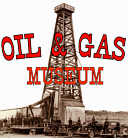
Oil & Gas Museum
119 Third Street
Parkersburg, West Virginia 26101
(304) 485-5446 |
|
Oil & Gas Museum
Parkersburg, West Virginia
www.little-mountain.com/oilandgasmuseum/
Both oil and natural gas were discovered in western Virginia by the first explorers in the mid-1700s. George Washington acquired 250 acres in what is now West Virginia because it contained an oil and gas spring. This was in 1771, making the father of our country the first petroleum industry speculator.
A thriving commercial oil industry was in process as early as 1819 with the first major wells drilled at Petroleum, West Virginia, outside Parkersburg, early in 1859; California, West Virginia in the summer of 1859; and Burning Springs, West Virginia a year later in 1860. Natural gas was moved in wooden pipes from wells to be used as a manufacturing heat source by the Kanawha salt manufacturers as early as 1831. These events truly mark the beginnings of the oil and gas industry in the United States.
|























